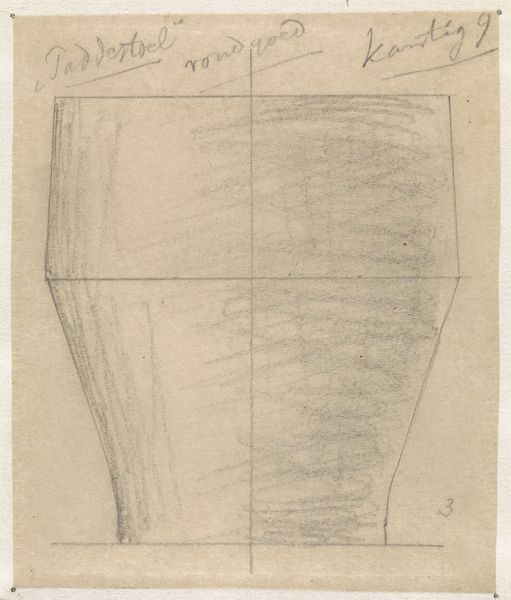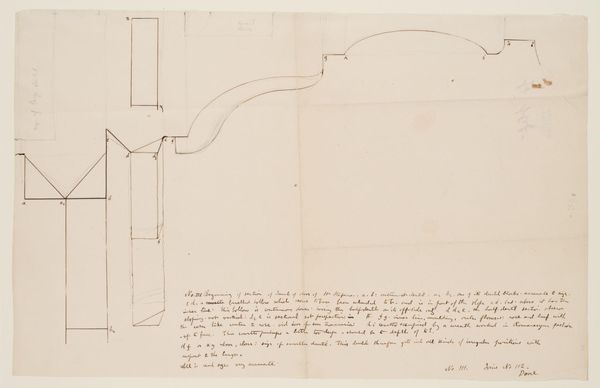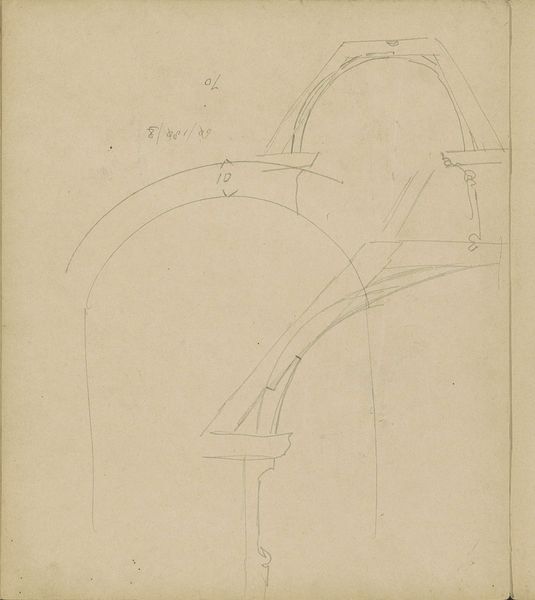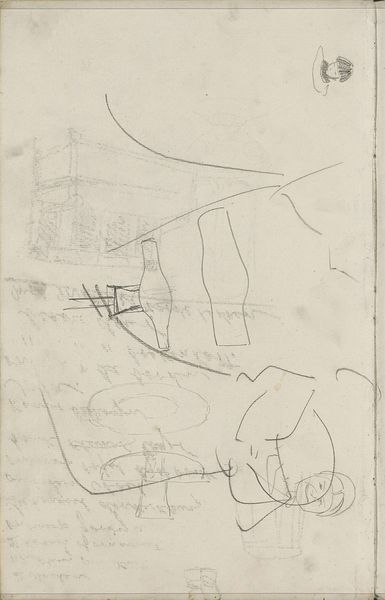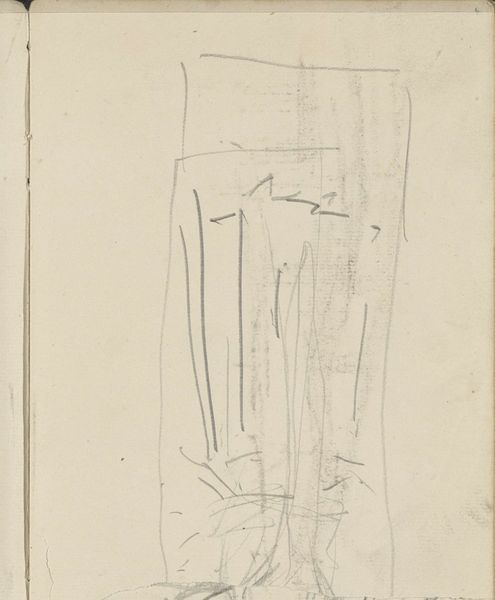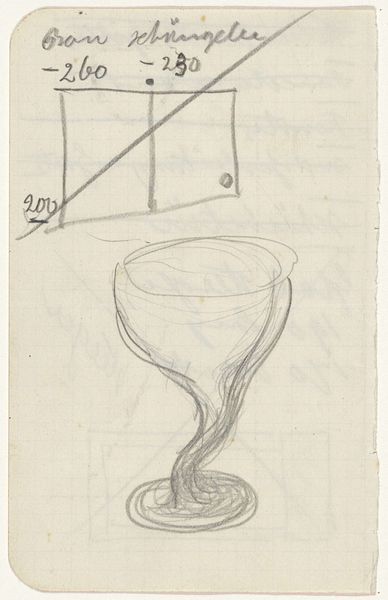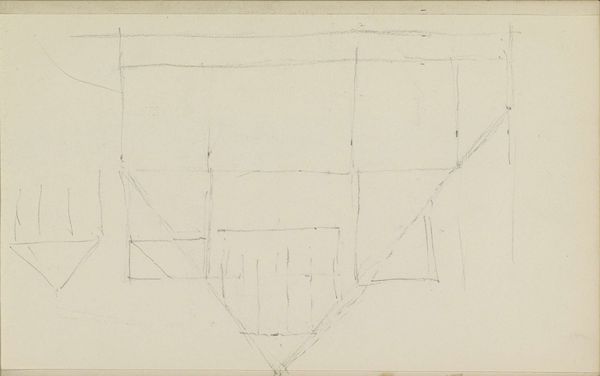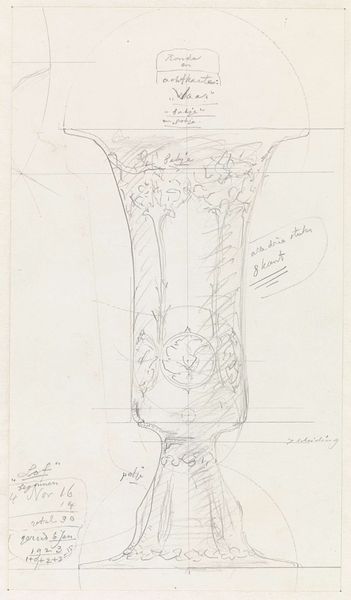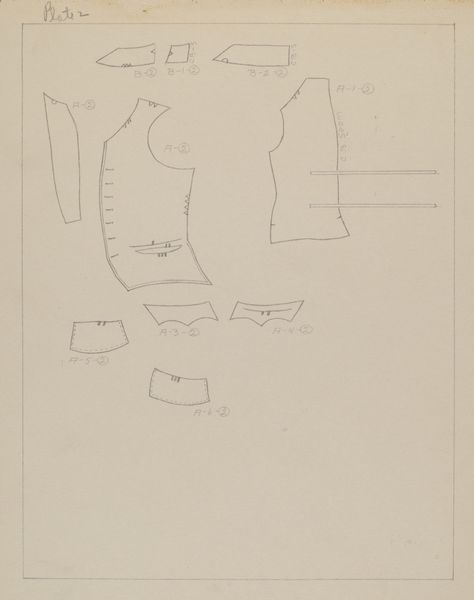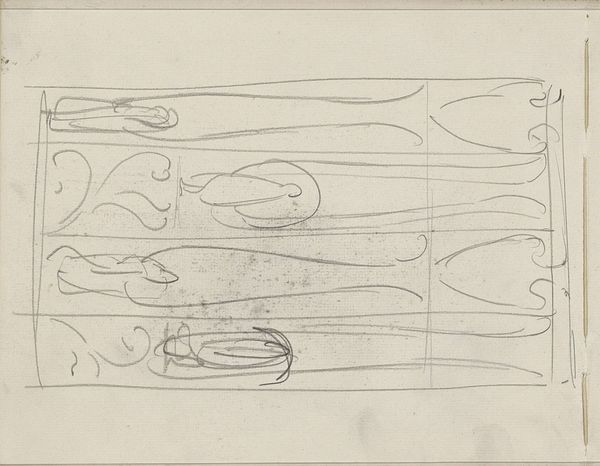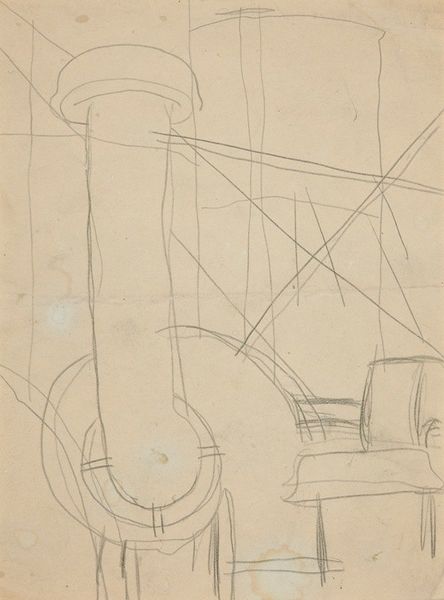
Vier ontwerpen voor vazen, een schotel en een doos en schotel van aardewerk 1851 - 1930
0:00
0:00
drawing, pencil
#
drawing
#
pencil sketch
#
vase
#
geometric
#
pencil
#
pencil work
#
decorative-art
Dimensions: height 599 mm, width 442 mm
Copyright: Rijks Museum: Open Domain
Curator: This drawing by Theo Colenbrander, dating from 1851 to 1930, showcases designs for earthenware—vases, a dish, and a box with a dish. What's your initial response? Editor: My first thought is simplicity. The pencil work gives it a delicate, almost ephemeral feel. It feels less like a firm blueprint and more like an idea taking shape. Curator: Precisely. Colenbrander was pivotal in the Dutch decorative arts scene, championing innovation in ceramics at a time when the industry faced stiff competition from abroad. These designs speak to a moment of searching for a distinctive national style. The early stages of a movement, maybe. Editor: The geometric underpinnings really stand out. These forms aren't organic, they’re carefully constructed. Even the slight curves on the vases are measured, almost architectural in their precision. Does this order reveal the cultural context? Curator: Definitely. There’s a strong link here to the burgeoning industrial design movement, trying to balance mass production with artistic expression. Notice how each vessel has a unique character, yet adheres to underlying principles of symmetry and proportion. They signal cultural stability even as tastes changed in response to wider market availability of factory made ceramics. Editor: Looking closer, the details like the scalloped edges on some of the pieces seem to introduce a gentler note, a touch of traditional craft amidst the geometry. Maybe there’s something evocative of flower petals there...the symbols of beauty in an ordered existence. Curator: Good observation. It reveals an internal tension within the broader artistic movement; wanting to embrace modernity but clinging to older ideas of the crafted object as a thing of intrinsic, aesthetic, worth. Editor: Ultimately, this sketch invites reflection on both the artistry and cultural history that influence the form and design, revealing how symbols can be both intentional and serendipitous as cultural movements find their language. Curator: Absolutely. It's a visual reminder of the creative energy when art and industry collide, offering insights into not only ceramic design but also shifting artistic values in that era.
Comments
No comments
Be the first to comment and join the conversation on the ultimate creative platform.
